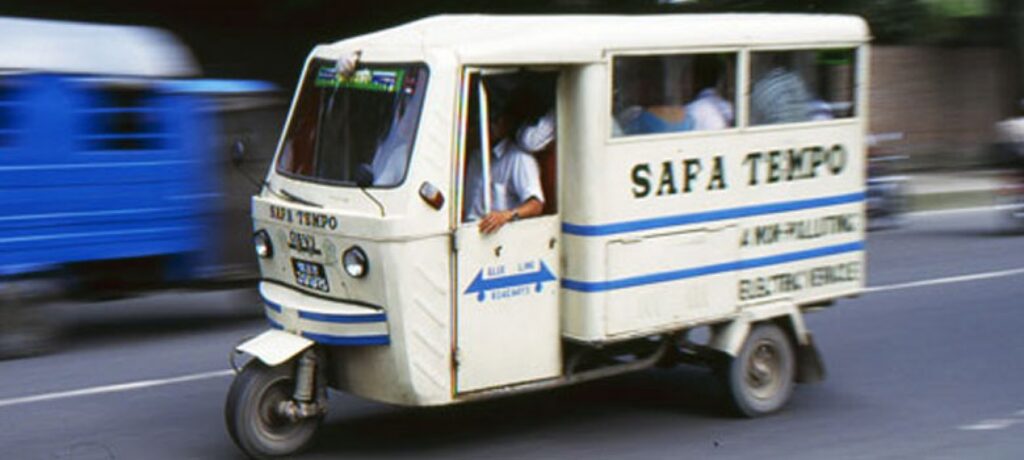Nepal’s electric vehicle (EV) story is one of ingenuity, environmental urgency, and perseverance, sparked by Peter Moulton’s pioneering Safa Tempo in the 1990s. From early experiments to a modern EV boom, Nepal has emerged as a surprising player in sustainable transportation. This article traces the evolution of EVs in Nepal, blending historical milestones with current trends.
Safa Tempo’s Groundbreaking Beginnings
In 1990, Peter Moulton and Marilyn Cohen, through the Global Resources Institute (GRI), tackled Kathmandu’s air pollution crisis by converting smoky diesel Vikram Tempos into electric Safa Tempos (“clean three-wheelers”). Funded by USAID, GRI used lead-acid batteries to create a practical solution for Kathmandu’s congested streets. A 1993 pilot, transporting 200,000 passengers over 175,000 kilometers, led to the Nepal Electric Vehicle Industry (NEVI) taking over. By 2000, over 600 Safa Tempos formed the world’s largest electric public transport fleet, with many driven by women, as noted in Bloomberg.
Earlier Sparks: Trolleybuses and Prototypes
Nepal’s EV roots trace back to 1975, when China gifted a 13-kilometer trolleybus system, powered by hydropower, though it collapsed by 2009 due to neglect. A 1989 fuel crisis, sparked by an Indian embargo, prompted the Electric Vehicle Development Group to convert a Volkswagen into an electric prototype in 1992, setting the stage for Safa Tempos.
Safa Tempo’s Rise and Fall
The late 1990s saw Safa Tempos thrive, with over 710 units serving 1.5 million commuters daily, backed by government bans on diesel three-wheelers and Danish-funded charging stations. Yet, by 2000, the end of tariff exemptions and competition from fossil-fuel microbuses halted local production. The fleet dwindled, maintained by small operators, as the vision of an EV-led Kathmandu faded.
Modern EV Revival
The late 2000s reignited Nepal’s EV ambitions. Mahindra’s Reva and BYD’s e6 debuted, and the end of power outages in 2018, driven by hydropower, fueled growth. By 2024, EV imports soared 149% to 11,701 units, led by BYD, Tata, and Hyundai, with tax incentives and financing easing adoption. Nepal’s 2025 NDC goals—25% electric private vehicles and 20% public—reflect bold commitments.
Ongoing Challenges
Urban-focused charging stations, high battery costs, and e-waste issues persist. Chinese brands, dominating 69% of imports, raise reliability concerns, with risks of companies abandoning customers. Rural infrastructure lags, limiting access.
Looking Forward
Nepal’s hydropower and EV legacy position it for leadership in sustainable mobility. Reviving local manufacturing, as Aloi suggests, could echo the Safa Tempo’s early success. From Moulton’s vision to today’s vibrant market, Nepal’s EV journey showcases resilience and potential. The challenge now is to build a truly electric future.
Sources: Makeshift Mobility, CityLab, Bloomberg, Nepal Economic Forum, The Kathmandu Post

